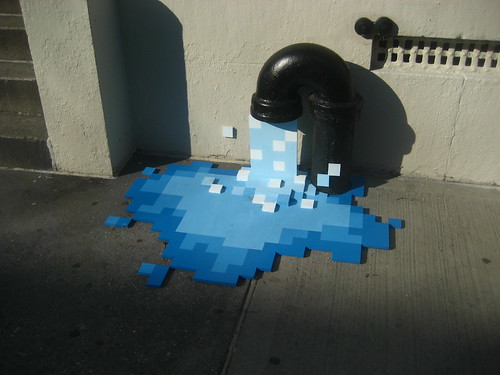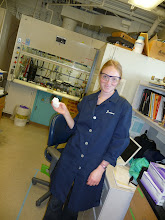Did you ever wonder what a "pixel" really is?
As promised, today we're going to learn about how LCD's have been developed to produce a vast array of different colors in different positions of your computer screen (or for those more technologically advanced readers, your TV screen!).
Pixel stands for "Picture Element" and it represents one of thousands or millions of points on your graphics display, which are ordered in rows and columns. If you were to zoom in on your computer screen A LOT, you would be able to see a single pixel, but since the screen you are viewing now is so zoomed out and there are so many pixels, you cannot tell that they are just tiny dots of color. The number of colors possible for each pixel is determined by the number of bits (click the link to learn about information theory), e.g., 10 bits allows for 2^10=1024 different colors possible for that pixel, although most pixels are 8-bit, which is more than enough.
If you have a color (rather than black or white) computer screen, then each pixel is made from three dots (blue, green and red). There are two types of LCD matrices: passive and active.
In a passive-matrix LCD, a grid transfers charge to the pixels. The grid consists of two glass sheets, one lined with columns and one lined with rows of a conducting material. The rows and/or columns are hooked up to electric circuits, which control the allocation of charge. Between the two glass sheets, as mentioned in the previous entry, is a layer of LC's. And on the outsides of each sheet of glass is a polarizing film.
In order to light up a pixel, charge is transferred down a column on one of the glass sheets. When the charge reaches a point on the other glass sheet that is grounded, the pixel at that intersection will light up in response to the untwisting (see previous entry) of the LC's at that point, and voila--color!
Have you ever noticed a trail behind the arrow on your screen when you moved it around rapidly? That trail results from the inadvertent untwisting of LC's in the immediate vicinity of the pixel of interest!
Now what about active-matrix LCD's?
Active-matrix LCD's use a glass sheet, much like the ones used in passive-matrix LCD's, but instead of columns or rows, the active-matrix glass sheet consists of a matrix of transistors and capacitors. In order to charge a pixel, the appropriate row is turned on and charge is transferred down the appropriate column. In this way, the capacitor at the specified pixel gets charged. And capacitors are pretty good at holding on to charge, so the pixel stays lit for as long as you like. Depending on how much charge is transferred to the pixel, we can vary the amount of light/color that is produced, thereby displaying the elaborate set of colors and shapes that you currently see on your screen!
Monday, October 13, 2008
Subscribe to:
Post Comments (Atom)






1 comment:
Kirby says "kudos" for the picture
Post a Comment